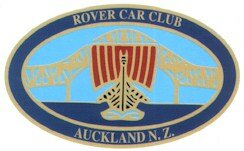
Defect Location
| SYMPTOM | POSSIBLE CAUSE | REMEDY |
| A—ENGINE FAILS TO FIRE WHEN COLD |
1. Inadequate or no fuel supply
|
1. Slacken filter plug on A.E.D. Crank engine, fuel should leak from to A.E.D. plug. If no fuel, check system leading to A.E.D. If fuel is present, tighten plug. Then carry out check 2 under symptom A. |
| 2. Inadequate or no fuel supply from A.E.D. to inlet manifold | 2. Crank engine for several seconds. Remove pipe at inlet manifold. If fuel is present, it indicates that the A.E.D. is satisfactory and the cause for failure to start must be traced to some other source. If no fuel is present this indicates a faulty A.E.D. Proceed as follows: (i) Check that main valve is open by inserting probe down centre hole—press down fully, probe should return approximately .030 in. (0,7S mm) when released. NOTE: This check is not applicable when temperature is above 350C. (ii) Remove float chamber lid, check that needle valve and float are free to move. If there is no fuel in float chamber check that fuel filter is clean and that ample fuel is being delivered to the unit. See Operation N/Q 21A. |
|
| B—ENGINE FIRES BUT FAILS TO KEEP RUNNING WHEN COLD |
1. Sticking or faulty needle valve or float
|
1. Check the following: i) Remove vent pipe from float chamber and check that fuel is not discharged when cranking engine. (ii) If fuel is discharged check operation of needle valve and float as detailed under ‘A’ item 2 (ii). |
| 2. Faulty air flap valve | 2. Remove air inlet elbow on A.E.D. and check that flap valve is free to move, and return under spring load. If jammed dismantle unit and rectify. |
|
| 3. Inadequate fuel supply | 3. Check for lack of fuel as detailed under ‘A’ Item land ‘A’ Item 2 (ii). | |
| 4. Faulty jet needle diaphragm |
4. Remove cap for needle diaphragm, then withdraw diaphragm and If diaphragm is satisfactory a complete overhaul of the unit is |
|
|
C—ENGINE FAILS TO START WHEN HOT OR PART WARM OR FIRES AND FAILS TO KEEP RUNNING
|
1. Incorrect starting procedure | 1. Crank engine and open throttle slightly, if unit is badly over- choked open throttle fully do not over-rev. If engine starts but fails to keep running carry out check 4’ below. |
| 2. Leaks from pipe layout | 2. Ensure’ that all pipes are correctly fitted, particularly the pipe between the hot air pick-up and the A.E.D. Rectify as necessary ensuring air tight joints. NOTE: Air leaks at the hot air entry will result in excessive fuel consumption and the possibility of stalling at certain engine temperatures. |
|
| 3. Before carrying Out further checks ensure that the A.E.D.is not the cause of failure tostart | 3. Remove pipe from A.E,D. to inlet manifold. Blank off aperture in manifold. If engine starts this indicates A.E.D. is at fault, and further checks must be made. However, if engine is flooded it may be necessary to crank for several seconds, with slightly open throttle before the engine will fire. |
|
| 4. Sticking or faulty needle valve or float | 4. Check the following: (I) Remove vent pipe from float chamber and check that fuel is not discharged when cranking engine. (ii) If fuel is discharged check operation of needle valve and float. Remove float chamber lid, check that needle valve and float are free to move. if there is no fuel in float chamber check that fuel filter is clean and that ample fuel is being delivered to the unit. See Operation NIQ 2lA. |
|
| 5. Main valve faulty. This fault and the checking procedure applies only when engine really hot. | 5. Check that main valve is completely closed by inserting probe down centre hole, press down fully, probe should not return which is indicates that valve is fully seated. If probe returns under spring pressure dismantle unit and rectity. |
|
| 6. Incorrect, needle movement | 6. Check movement of jet needle by inserting probe down hollow grub screw, push down fully, if engine is at its normal working temperature probe should not return, if partly warm, probe should return approximately .015 in. (0,40 mm). |
|
| 7. Faulty needle diaphragm | 7. Carry out checks as detailed under ‘B’ Item 4. |

